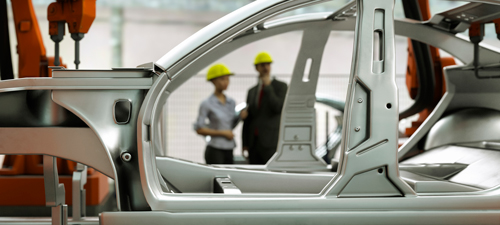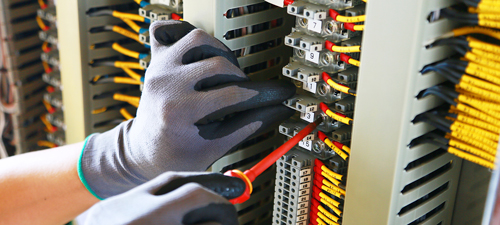Plastic components are frequently integrated into other manufactured products as a way to reduce cost and create lighterweight goods. It’s an excellent choice for creating strong, flexible parts. In order to maintain the integrity of these plastic parts, metal components may be inserted into the plastic housings, primarily using ultrasonic welding or heat staking for thermal insertion.
How Insertion Works
Regardless of which specific insertion method you are using, the basic process is the same. In order to create a strong bond between the plastic part and the metal insert, the plastic is melted around the insert to prevent the components from falling apart under extraordinary weight or pressure.
Heat Staking
Heat staking requires heating of the metal component before it is pressed into the plastic housing. Often, the metal is pressed into the plastic component using 50 pounds of pressure or less. Because the plastic isn’t heated, it is essential that the metal components conduct heat sufficient to melt and mold the plastic around it. Brass and aluminum are conductive and both work well for heat insertion. They also cool down quickly after insertion.
The main advantage of heat staking is its low installation force, which makes it possible to successfully insert metal in thin plastic components. One of the most notable disadvantages of heat insertion is that it can take longer to install the component and longer to cool, leading to lengthier production times.
Ultrasonic Welding
The ultrasonic welding process uses high-frequency vibrations that are transmitted through a pneumatic cylinder with an ultrasonic horn. The rapid vibration generates heat that melts the plastic as the insert is pressed into it. In order to complete ultrasonic welding or insertion, you will need an ultrasonic horn, an electronic power supply, an energy transducer, and timers to control vibration cycles.
This ultrasonic welding process is much quicker than heat staking. Ultrasonic welding equipment can also be used for other applications including welding plastic components together. The machinery is versatile and can be used with a number of different insert sizes and types. On the downside, the pressure and vibration associated with ultrasonic welding has the potential to damage metal and plastic components, especially thin-walled or fragile parts. Fortunately, the risk of this kind of damage occurring is lowered when completed by experienced professionals.
KASO’s Ultrasonic Welding Services
Take advantage of the versatility and efficiency of ultrasonic welding with KASO’s ultrasonic welding services. Contact KASO today to learn more and see how we can use ultrasonic welding to help you achieve the strength and integrity you are looking for in your components.








 Molding services for Agricultural customers
Molding services for Agricultural customers